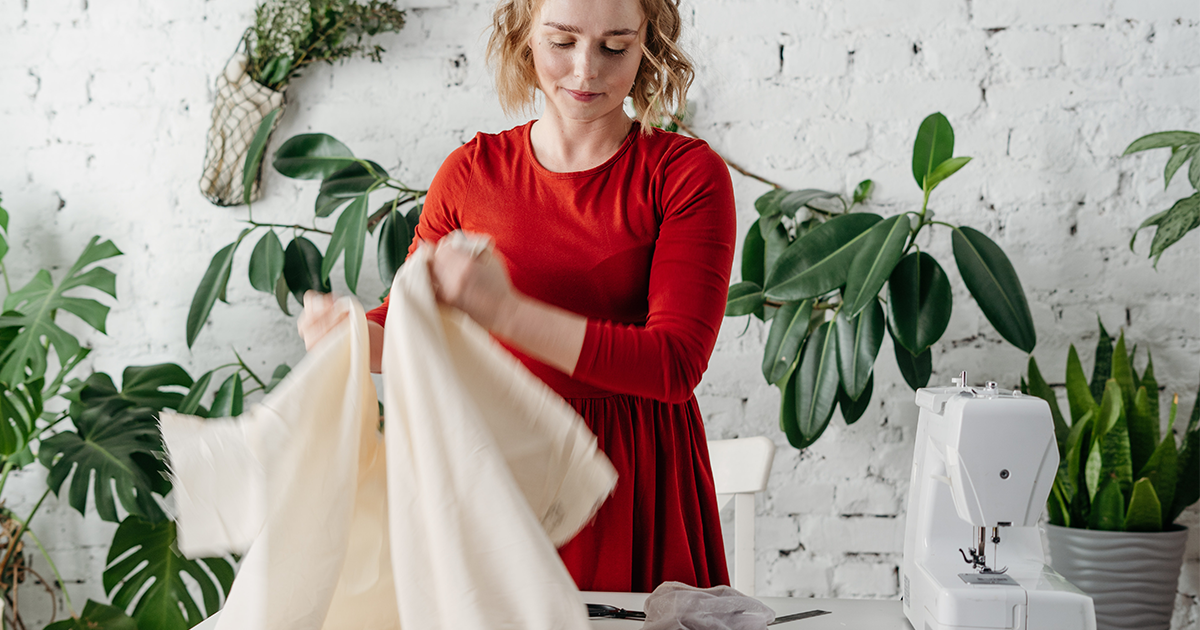- Repair – extending the life of an existing garment
- Reuse – using what we already have and reducing the number of new garments or components consumed
- Refurbish – updating an old garment
- Recreate – refashioning existing unwanted items into something new.
 Despite its challenges upcycling is becoming the “new normal” and here are the reasons we should practice it:
Despite its challenges upcycling is becoming the “new normal” and here are the reasons we should practice it:
Better for the environment
The use of chemicals, fossil fuels for energy or excessive water is not required for production.Affordable
Buying a garment that is made from better materials to suit your style, size and social needs, has more value and is less likely to be discarded or replaced by new items.Upcycled items are unique
Each item tells a story about its maker, its wearer and its history. This gives upcycled clothing a value you will not find in disposable fast fashion brands.Supports local production
Supports local designers who in turn make use of local skills and craft traditions.Creativity is good for the soul
Studies show that engaging in creative activities harnesses and amplifies positive feelings about oneself and is a good activity to practice if you have mental health issues. Sustainable or circular fashion is no longer just an option, it has become a must. Luxury fashion brands Valentino, Gucci, Miu Miu amongst others are picking up on this zero waste/upcycling ethos, making upcycling the biggest fashion trend of 2021 according to Vogue contributor Emily Chan (23rd November 2020). Why not join the Fashion Revolution and show your resistance to toxic fast fashion? Start your own upcycling journey with these simple UPCYCLE practices you can adopt- Salvage components for reuse before you discard an item of clothing – buttons, zips, lacework
- Support local upcycle designers
- Repair and take care of the clothes you already have.
- Dye clothing to give it a fresh look or to cover stains you cannot remove.
- Embellish an item to update it by adding some personalized embroidery, textile paint or patches.
- Modify a garment by cropping, combining with another or deconstructing it.
Article by Tonya Lehtinen, Vogue Xchange
Sources:
Harvey J., The Rise Of Deadstock Dressing: Designers Approach Upcycling Clothes The Chic Way, Giving unsold clothes and cast-off fabrics new life, 2021, https://www.elle.com/uk/fashion/trends/a36282440/upcycling-clothes/ [Accessed 14 December 2021]
Chan E., Upcycling Is The Biggest Trend In Fashion Right Now, 2020, https://www.vogue.co.uk/fashion/article/upcycling-trend-ss21 [Accessed 14 December 2021]
SIGN UP FOR OUR NEWSLETTER
The information contained herein is for general information purposes only. APS Bank plc will not be held responsible or liable in any manner for any of the information contained herein. While APS Bank plc has made every attempt to ensure that the information contained herein has been obtained from reliable sources, APS Bank plc will not be held responsible for any errors, omissions or inaccuracy, or for the results obtained from the use of this information. The primary purpose of these articles is to educate and inform. These articles do not constitute legal, medical or professional advice or service.

